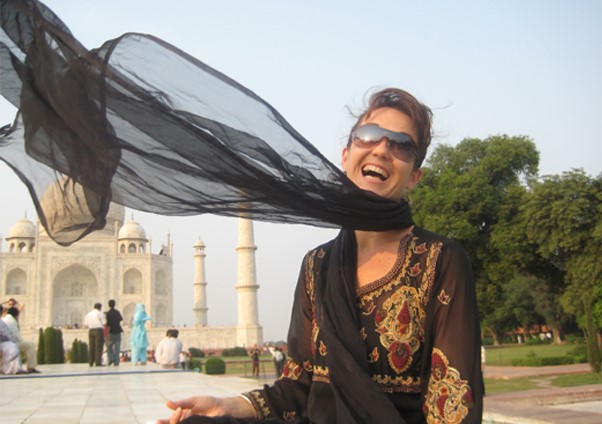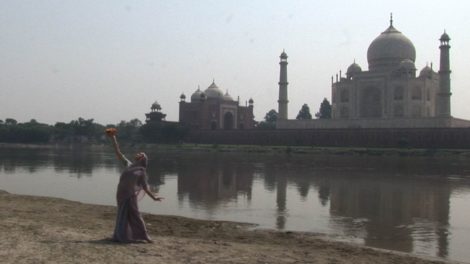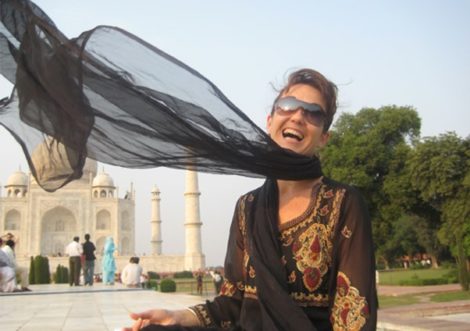24 March 2011. The Rose Theatre, New York
The 2011 New York revival of Snow on the mesa, subtitled Portrait of Martha, began in a highly theatrical manner. Three stuffed wolf heads lay on the stage floor. Three women clad in black hooded cloaks appeared at various intervals. Dramatic colours, often a brilliant blue, washed the backcloth. A single hand belonging to one of the mysterious figures was lit briefly to glow starkly in the darkness. A soundscape of rain, wolves howling, thunder and lightning broke the silence. Towards the end of this section, the first of twelve that made up the total piece, the women each picked up a stuffed head and wore it as a glove. They exited as mysteriously as they had appeared.
This opening had all the hallmarks of the best of Robert Wilson, who choreographed and designed the work for the Martha Graham Dance Company in 1995. We saw in particular his dramatic use of space in the strategic placement of the wolf heads on the floor and the mysterious arrival of the women at separate moments; we saw and heard how brilliantly he can juxtapose elements of sound and light against objects and people to set up an atmosphere; and we saw his capacity to create allusions and resonances, all surreally personal to the audience. The opening made me think of Cathy and Heathcliff on the Yorkshire moors in Wuthering Heights. Perhaps, however, those more familiar with the work of Martha Graham could see allusions to Graham or her work since this portrait of Martha was meant to evoke Graham’s creative journey.
But after this first scene, ‘The wolf wife’, the work fell apart somewhat. Can Robert Wilson seriously be considered a choreographer? I suspect not. The third section entitled ‘Navaho Rug’ was a case in point. The sole dancer looked to me a little like a golliwog or one of those Christmas Nutcracker dolls with a string that when pulled makes the dolls’ arms and legs move in a jerky fashion. It also went on for an inordinate length of time and as a result could not escape from being unnecessarily repetitious.
Another section, which I only realised after looking back at the program must have been the section entitled ‘Very young Kachina clowns’, was a reference to a character within the Hopi tradition who engages in exaggerated behaviour. And exaggerated is the word to describe the choreography of this section. All that face-pulling simply made good dancers look silly. Similarly when the company appeared onstage all wearing long Methuselah beards (and I mean seriously long—they almost swept the floor) in the section entitled ‘Very old: ghost walkers’, I had to wonder why any choreographer would want to dress such beautiful dancers as the very elegant Katherine Crockett in such a get-up.
Apart from Crockett, the other dancer who stood out was the Chinese-born Xiaochuan Xie whose dancing in ‘Shaker interior’ with Tadej Brdnik was as minimally beautiful as the white bench that was the only item of decoration in this section. It was a travesty to have this dancer wearing one of those hideous Methuselah beards later in the piece.
We knew the work had reached its conclusion when the snow began to fall from the flies, although there were sections before this scene that seemed (wishful thinking?) like a finale. People had left before the snow of course. But then it wouldn’t be a Robert Wilson piece without a restless audience.
Michelle Potter, 24 March 2011
For images that underscore the dramatic visual look of Snow on the mesa open this link. It also gives another account and a link to yet another.


